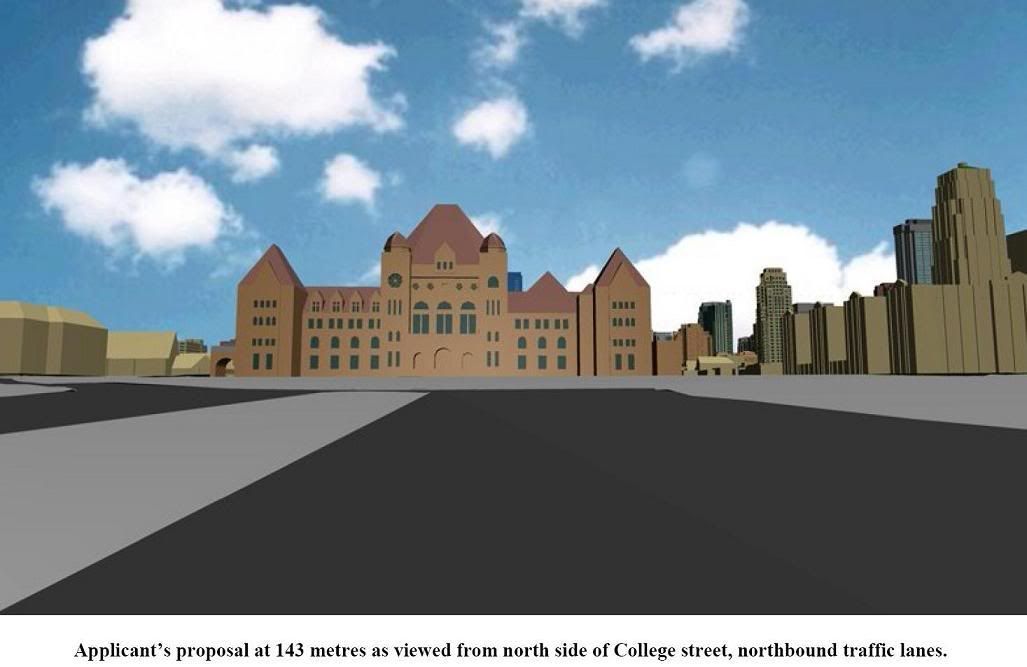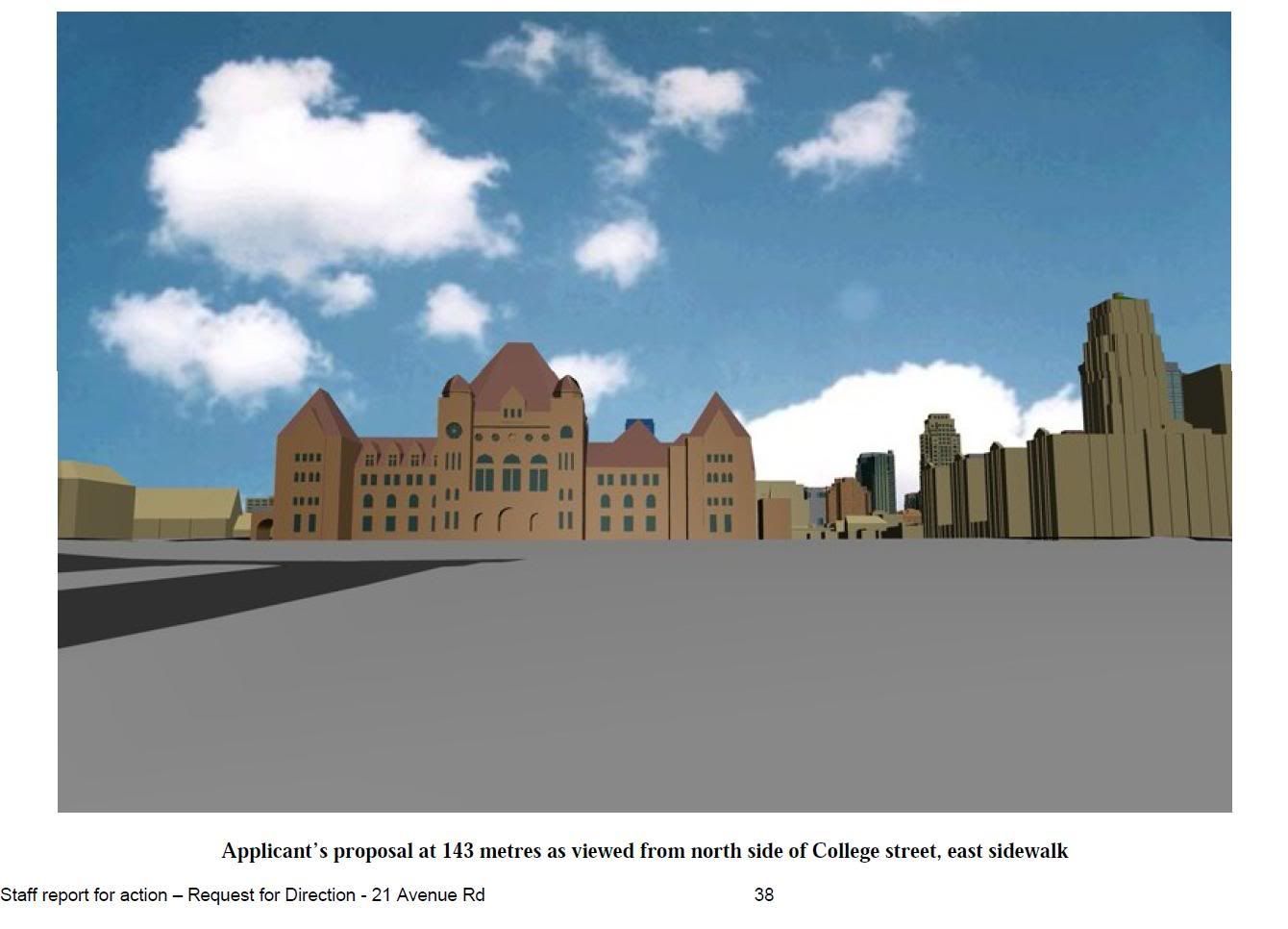Traynor
Senior Member
Although I am all for intensification along Bloor, I am not a complete philistine when it comes to the sensitivity of the view up University. I just want Toronto to look like the metropolis that it is. When some tourist goes back home and they show that photo to friends, I cringe when I think what a small town they must think Toronto is.
I would love to see a wall of 200-250 meter towers behind the Main Legislative Building at Queen's Park. Though ideally they would all be examples of the best architecture in the world. I personally would like to see something like One St.Thomas only 100 meters taller and then about 25 more of them in all different claddings.
Eventually we may get the Central Park effect that I crave. In my opinion, building around a park only serves to elevate the status of the remaining green space. Raising it to a protected oasis and not just another patch of trees.

(courtesy SSP at http://www.skyscrapercity.com/showthread.php?t=304336 )
I would love to see a wall of 200-250 meter towers behind the Main Legislative Building at Queen's Park. Though ideally they would all be examples of the best architecture in the world. I personally would like to see something like One St.Thomas only 100 meters taller and then about 25 more of them in all different claddings.
Eventually we may get the Central Park effect that I crave. In my opinion, building around a park only serves to elevate the status of the remaining green space. Raising it to a protected oasis and not just another patch of trees.
(courtesy SSP at http://www.skyscrapercity.com/showthread.php?t=304336 )

